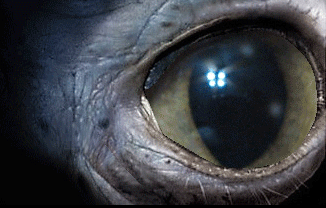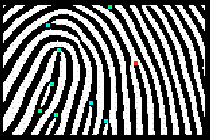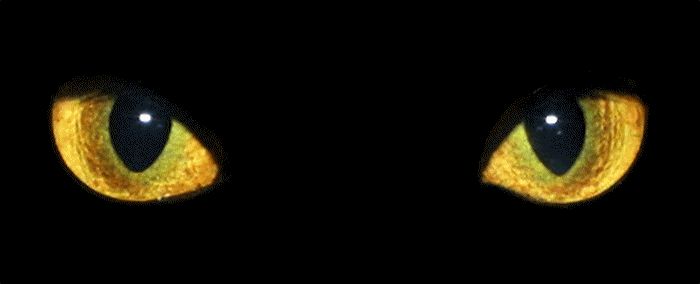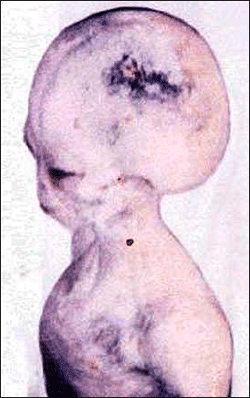

 
ALIEN DISCLOSURE
Continued... Other people, other worlds
"ALL mortal-inhabited worlds are evolutionary in origin and nature. These spheres are the spawning ground, the evolutionary cradle, of the mortal races of time and space. Each unit of the ascendant life is a veritable training school for the stage of existence just ahead..." Our Local Universe contains seven types of sentient, mortal beings (with many variants) organized as follows:
In our local universe about two and one-half per cent are sub-breathers, about five per cent superbreathers, and over ninety-one per cent are mid-breathers like us. (If intelligent creatures existed on Venus, they would belong to the superbreather group, while those inhabiting Mars, would be subbreathers.) If mortals inhabited a planet with no air, like the Moon, they would belong to the separate order of nonbreathers, and they are very rare. 2. The elemental types. These differentiations have to do with the relation of mortals to water, air, and land. There are four distinct species of intelligent life as they are related to these different habitats. Our human race is of the land order. On some worlds the evolving mortals begin life and remain in the water instead of venturing on to the land. In other worlds it is possible, because of the density of their atmosphere, to navigate in the air. In the local universe, seven per cent are water, ten per cent air, seventy per cent land, and thirteen per cent combined land-and-air types. 3. The gravity types. Mortal beings can evolve and adapt to function on spheres both smaller and larger than Earth. Beings therefore vary in size and height. Some are only 30 inches in height while others are over 10 feet. The average in our local universe is about 7 feet tall. 4. The temperature types. Mortal beings can evolve to withstand temperatures much hotter and much colder than the what we experience on Earth. In our local universe, twelve percent belong to the higher temperature ranges, eighteen per cent to the lower ranges. The rest are in the mid-temperature group like us. 5. The electric types. The electro-magnetic, and electronic behavior on the inhabited worlds varies greatly. "There are ten designs of mortal life variously fashioned to withstand the differential energy of the spheres. These ten varieties also react in slightly different ways to the chemical rays of ordinary sunlight. But these slight physical variations in no way affect the intellectual or the spiritual life." 6. The energizing types. Not all worlds are alike in the manner of taking in and using energy. Some worlds do not have an atmosphere capable of respiration and the exchange of gases, such as we do on Earth. Therefore, metabolism, food and anatomy can be very different. "There are six differing types of animal and mortal nutrition: The subbreathers employ the first type of nutrition, the marine dwellers the second, the mid-breathers the third, as on Urantia (Earth). The superbreathers employ the fourth type of energy intake, while the nonbreathers utilize the fifth order of nutrition and energy. The sixth technique of energizing is limited to the midway creatures. 7. The unnamed types. There are mortal beings who sometimes cannot easily be fit into the above classifications because of their physical combinations and adjustments. These are nonetheless beings with awareness, spiritual and social capabilities and similar to all other mortals of the local universe.
Aliens on the Moon? One of the most chilling revelations in the Urantia Papers is at the end of their doscourse on a class of mortals called non-breathers. According to the papers, there are orders of mortals who are able to live on worlds with little or no air. In our local universe there are only nine such worlds. There are few nonbreather types of inhabited worlds in our system because this more recently organized section of the local universe is full of debris and meteors. Worlds without a protective atmosphere are constantly bombarded by these objects and the nonbreathing worlds must protect themselves by making electrical installations which shunt the meteors -- much like our electronic bug traps. The non breathing mortals must hide in protective insulated environments because their worlds are subjected to electrical storms and charged surface phenomenon, unknown to atmospheric beings. The nonbreathers do not eat food or drink water. Their nervous systems, heat-regulating mechanisms, and metabolism are dramatically different from such Earth humans. Almost every act of living, aside from reproduction, is different. But here is the big deal with non-breathers:
You would be more than interested in the planetary conduct of this type of mortal because such a race of beings inhabits a sphere in close proximity to Urantia. It seems almost certain that they are referring to aliens who inhabit our Moon! Which brings us back to Viewzone's recent articles on the Anomalies of the Moon, Part 1 and Part 2.
 
Comments:
|
Stay tuned, more disclosure is straight ahead.
Editor/viewzone.com
myristicin@hotmail.com

This article shows you how to "read" the eyes of your lover, boss or politician. It's the same tried and tested method used by Homeland Security, the police and FBI.

Learn everything about handwriting analysis in these free viewzone lesson by a professional!

Each person's fingerprint is unique. Exactly how do they match them so quickly?

What do your color preferences reveal about your hidden personality. See what advertisers and marketing professionals have known for decades.
 1. The atmospheric types. The physical differences of the aliens are determined mainly by the nature of the atmosphere. The atmospheric currently on Earth is ideal for the support of the breathing type of human type of being. Other planets can also support the breathing types with physical adjustments to support superbreathers and sub-breathers, depending on their atmosphere.
1. The atmospheric types. The physical differences of the aliens are determined mainly by the nature of the atmosphere. The atmospheric currently on Earth is ideal for the support of the breathing type of human type of being. Other planets can also support the breathing types with physical adjustments to support superbreathers and sub-breathers, depending on their atmosphere.
